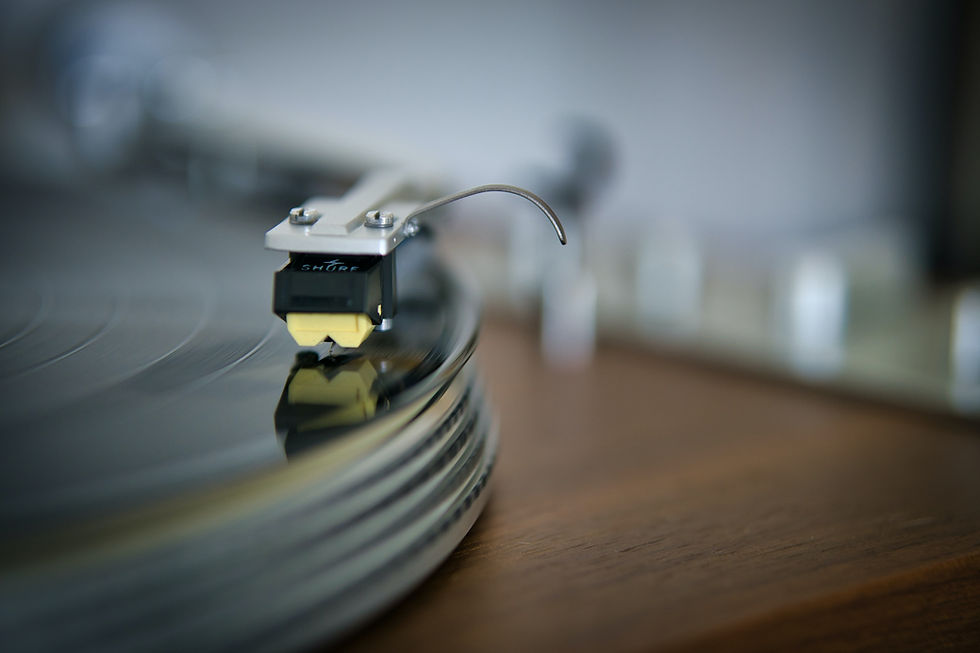Used Phono Cartridges: A Basic Understanding - September 2022
- Lou Hamilton

- Sep 10, 2022
- 4 min read
You can go many places, like eBay, to find where used phono cartridges are being sold.

At the time of this writing, there are over 550 listed with nearly 400 sold. Is this a good idea? In short, not really. There are a number of issues when buying a used cartridge or stylus.
First off, there is the basic mechanical nature of them. With few exceptions, either moving magnet or moving coil cartridges or styli are constructed with some form of flexible suspension. This allows the cantilever, which holds the actual “needle” to move freely in the record groove to pick up the vertical amplitudes (vibrations). When first produced, they are compliant in flexibility as designed. However, like anything that is flexible, time, heat, and pollution, takes a toll on that flexibility. As they do, their flexibility (compliance) is changed taking it out of the original specifications of performance. Simply put, they do not sound as good. Oh yes, they still work to some greater or lesser degree but not as originally designed. This happens whether or not the turntable is used. It’s time and the environment ticking away. Depending upon where you live, this life cycle happens over a 3 to 5 year span. With moving coils, it can happen more quickly. If the pollution is bad, it can shorten the life to about 2 years. I have a customer from Los Angeles where pollution was so dreadful he even had to replace his wetsuits for scuba diving every 2 years! So, buying a used cartridge or stylus is a real pig in the poke and rarely is it a “bargain.” Now I understand that some companies are simply gone and you can only find used ones or some off brand of a replacement stylus. My advise is to move on. This aging process happens, as well, to old cartridges still in their original box or packing.
A second issue involves the metal contacts for cartridge tags or contacts on both moving magnet and moving coil cartridges. I have seen them both oxidize (when not gold plated) as well as corrode whether they are plated or not. So, you run up against the electrical barrier when you are only transmitting .3mv up to 5 mv. That’s millivolts. So, you might have a lower output, a distorted output or channel imbalance if it is more dramatic on one channel vs. the other.
Similar, to this, can be the physical deterioration of the coils used in moving coil cartridges or the electrical wires inside a moving magnet cartridge. This is usually far more pronounced with age and may also include contamination by dust and dirt.
Then, there is the destruction of a cartridge by a well intentioned audiophile. This includes the use of all sorts of goos for both stylus and records. In the case of the stylus, many cantilevers are hollow so the use of a fluid on them gets sucked up inside the cantilever and dries out. This changes the effective mass of the cantilever and its performance. If severely used, I have seen this crap find it way up to inside the moving coil mechanism itself. I have also seen it all over the rubber surround on a moving magnet cartridge. On records, fluid use for records can result in an enormous amount of baked on crude on the actual needle or around it. Used sellers may admit to using this, some may not, and then there are the thrift store sellers who have no idea what was done.
Up to this point, I have talked about the physical deterioration or destruction of the cartridge or stylus. Now, let’s talk about the risk to your records. When a stylus in the grove, it applies up to around 2000 pounds of pressure per square inch and instantaneously heats the vinyl to about 500 to 600 degrees. (Thus, only play a record once in a day and let the vinyl settle back to form for best results…but I am ahead of myself on used records). Diamonds or other materials will wear and shape under these conditions. As they do wear, they develop flat spots where the contact with the vinyl is made. Thus, I typically say that after about 500 hours of play, its time for a new cartridge if you care about your records and want performance. These flat spots start to become noticeable after about 50 hours of play. Now, here’s the devil in buying a used cartridge or stylus. These points in human scale are running at 60 miles per hour controlled by a pivot point 3 miles away. The precision is exacting and after 50 hours, they are mated. The risk then, when buying a used stylus or cartridge is where are those flat spots? One edge or another, unless the humanly impossible task of re-mating the position is done, is going to become a leading edge cutting into the record vinyl itself. If you don’t care about your records, fine. If you do, well…… There is some wonderful photography in sound engineering handbooks on this phenomena and likely on the web too. Again, sellers often have no idea how much play time is on them and if from a scrounger, well, they are just selling it at market price without any understanding or consideration of what is going to happen to your records.
So, as I always say, it’s your money and you can do what you wish. I just don’t recommend it for the reasons stated. Lou








Comments